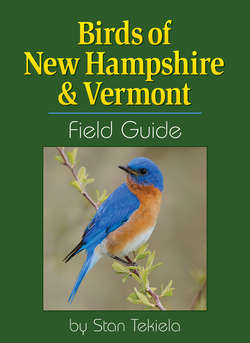Читать книгу Birds of New Hampshire & Vermont Field Guide - Stan Tekiela - Страница 16
На сайте Литреса книга снята с продажи.
Why Birds Migrate
ОглавлениеWhy do birds migrate? The short answer is simple–food. Birds migrate to areas with high concentrations of food, as it is easier to breed where food is than where it is not. A typical migrating bird–the Purple Martin, for instance–will migrate from the tropics of South America to nest in forests of North America, taking advantage of billions of newly hatched insects to feed its young. This trip is called complete migration.
Some birds of prey return from their complete migration to northern regions that are overflowing with small rodents, such as mice and voles, that have continued to breed in winter.
Complete migrators have a set time and pattern of migration. Each year at nearly the same time, they take off and head for a specific wintering ground. Complete migrators may travel great distances, sometimes as much as 15,000 miles (24,150 km) or more in one year. But complete migration does not necessarily imply flying from the frozen northland to a tropical destination. American Tree Sparrow, for example, is a complete migrator that flies from Canada to spend the winter in New Hampshire and Vermont. This is still called complete migration.
There are many interesting aspects to complete migrators. In the spring, males usually migrate several weeks before the females, arriving early to scope out possibilities for nesting sites and food sources, and to begin to defend territories. The females arrive several weeks later. In the autumn, in many species, the females and their young leave early, often up to four weeks before the adult males.
All migrators are not the same type. Partial migrators, such as American Goldfinches, usually wait until their food supplies dwindle before flying south. Unlike complete migrators, partial migrators move only far enough south, or sometimes east and west, to find abundant food. In some years it might be only a few hundred miles, while in other years it might be nearly a thousand. This kind of migration, dependent on weather and the availability of food, is sometimes called seasonal movement.
Unlike the predictable ebbing and flowing behavior of complete migrators or partial migrators, irruptive migrators can move every third to fifth year or, in some cases, in consecutive years. These migrations are triggered when times are really tough and food is scarce. Pine Grosbeaks are a good example of irruptive migrators, because they leave their normal northern range in search of food or in response to overpopulation.
